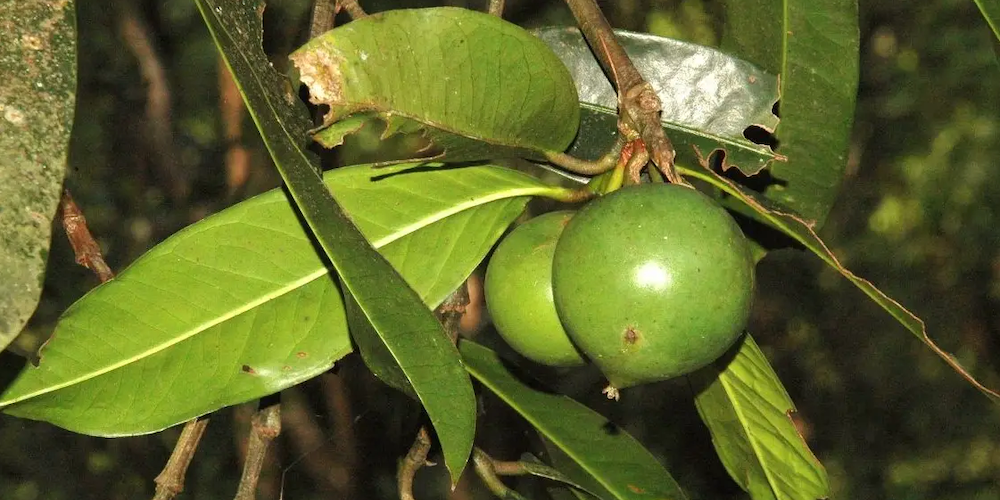Assam’s Medicinal Plant Borthekera Can Arrest Heart-Ailments

Indian scientists have found that Garcinia pedunculata, a medicinal plant commonly called ‘Borthekera’ in the Assamese language and traditionally forbidden for raw consumption, has potentials to prevent and cure heart diseases.
Administration of the dried pulp of the ripe fruit of the medicinal plant reduced cardiac hypertrophy indicators and oxidative stress and heart inflammation brought on by ISO (medical electric equipment).
The plant is related to the popular tropical fruit, mangosteen.
Of course, the dried pulp of the ripe fruit from Borthekera has been used for centuries for both medicinal and culinary purposes. Some of the therapeutic properties of Borthekera that were known earlier are :
Anti-inflammatory – The plant has anti-inflammatory properties that can help to reduce inflammation in the body.
Anthelmintic – Borthekera has been traditionally used for treating parasitic infections.
Antibacterial and antifungal – The plant has antibacterial and antifungal properties that can help to fight against harmful microorganisms.
Antidiabetic – Borthekera has been shown to have antidiabetic properties that can help to regulate blood sugar levels.
Hypolipidemic – The plant has hypolipidemic properties that can help to reduce cholesterol levels in the body.
Nephroprotective – Borthekera has nephroprotective properties that can help to protect the kidneys.
Neuroprotective – The plant has neuroprotective properties that can help to protect the nervous system.
However, what has been discovered by the Indian scientists now is that Borthekera can prevent heart-diseases, too.
This discovery is welcome news as heart ailments are a significant cause of morbidity and mortality worldwide.
Scientists of Institute of Advanced Study in Science and Technology (IASST), an autonomous institute of the Department of Science and Technology (DST), explored this medicinal plant’s potential to prevent heart diseases. A double dosage of bioactive chloroform fraction (GC) of the herb was fed to Wistar rats at 24-hour intervals (85mg/kg body weight (BW) for 28 days.
To assess the therapeutic effect, this was followed by injection of isoproterenol following the isoproterenol-induced myocardial infarction model. All the animals were analyzed, revealing that the disease group had significant ST wave (ST is the segment representing the interval between depolarization and repolarization of the heart’s ventricles) elevation, indicating myocardial infarction, which was normalized with Atenolol and GC treatment. Cardiac hypertrophy, cardiac troponin I, tissue lipid peroxidation, and serum inflammatory markers were all significantly elevated in the disease group, which were maintained at near-normal levels in the GC pretreated groups. The endogenous antioxidants were also revamped in the GC-treated groups.
Ms. Swarnali Bhattacharjee, SRF, under the supervision of Dr. Rajlakshmi Devi, have attributed these improvements to the excellent antioxidant and anti-inflammatory potential of GC that helped protect the heart against isoproterenol-induced injury.
Moreover, the chemical characterization of the chloroform fraction revealed the presence of active phytocompounds like hydroxycitric acid, hydroxycitric acid lactone, and parvifoliquinone along with compounds like GB-1a, Garcinone A, 9-Hydroxycalabaxanthone, Chlorogenic acid, and Garcinol as well. The therapeutic effects reported in this study are likely due to the presence of all these compounds. All these results strongly infer the good cardioprotective potential of G. pedunculata fruit abundantly available in Northeast India.



